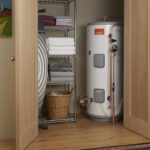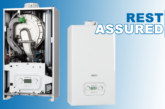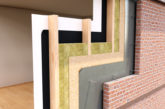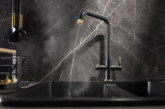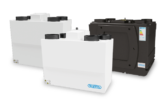George Linder, Product Manager at Heatrae Sadia, provides his top tips for specifying a hot water cylinder.
Ever since the UK water byelaws were relaxed in 1985, unvented water cylinders have proven themselves to be a popular choice for providing a reliable and efficient water supply in homes across the country. Delivering pressurised hot water for fast filling baths and powerful showers, and requiring no cold-water feed cistern, unvented cylinders are synonymous with high-performance and providing comfort to householders.
Maximising comfort and maintaining peak-performance requires several considerations to be made whenever a hot water cylinder is specified. George Linder, Product Manager at Heatrae Sadia, provides his top tips for ensuring that the chosen system is suited to the home it is installed in.
Size the cylinder according to need
It goes without saying, but size really does matter when specifying a hot water cylinder. According to the Hot Water Association the average bath uses 100 litres of hot water at 40oC, while the average shower uses 18 litres of hot water per minute. Therefore, assessing the demand that will be placed on the cylinder along with the frequency of delivery, and the recovery time necessary will ensure that the right sized cylinder is specified to meet the hot water needs of the residents.
Get to know the peak requirements
Understanding the demands of the end-user will ensure that the most appropriate cylinder for the job is specified and installed. Being aware of the number of outlets within a property, their respective flow rate and the number of occupants, will allow for the correctly sized cylinder to be chosen.
Specifying a cylinder that is too small will leave the residents lacking in hot water, specify one too large, and the specifier risks forcing the homeowner to pay to heat unneeded hot water.
Check the water supply
It is the role of the specifier to ensure that the water supply to the cylinder is of an adequate pressure to maintain the pressurised delivery of hot water to all outlets and is of a suitable flow rate for times of high demand. For instance, a home with a family bathroom and an ensuite will experience greater demand than a house with only one bathroom. Checking the suitability of the water supply is critical when specifying a cylinder.
Site it right
The discharge from the cylinder may not always be at the forefront of a specifiers’ or installers mind. Building Regulation ADG3 requires careful consideration of the siting of the tank to ensure that the discharge from an unvented cylinder such as the Megaflo Eco, is conveyed safely outside of the building where it can cause no damage or danger to occupants or their property. It is the job of the heating engineer to ensure that no discharge enters the property once the cylinder is installed and commissioned.
Consider ‘ready-to-go’ cylinders
Cylinders such as the Megaflo Eco SystemFit are designed with new-build developers in mind. Arriving pre-wired and plumbed from the factory floor, the unvented cylinder provides homebuilders with a consistently neat appearance across their plots. When developing any new plot, time is money, with factory-fitted plumbing and wiring developers can save a considerable amount of time on the cylinder installation – keeping costs low and returns high.
As part of its Love Your Cylinder campaign, Heatrae Sadia is running an online quiz, with the chance to win prizes. To find out more click here.

